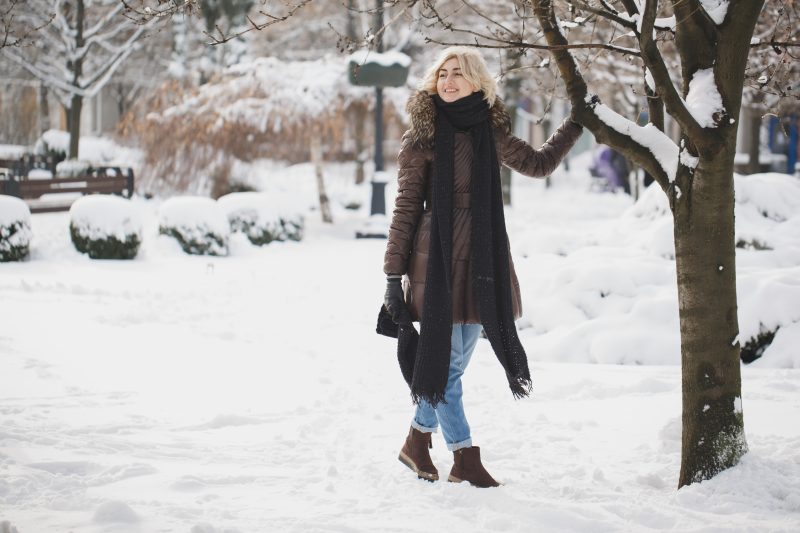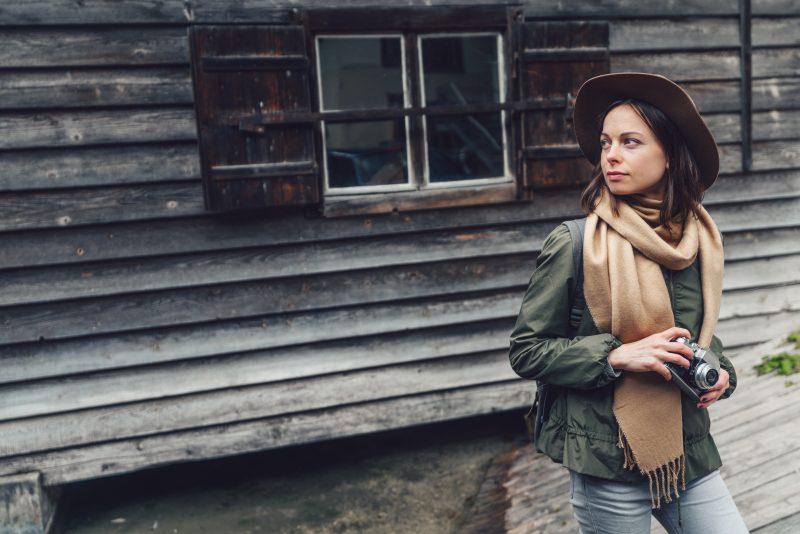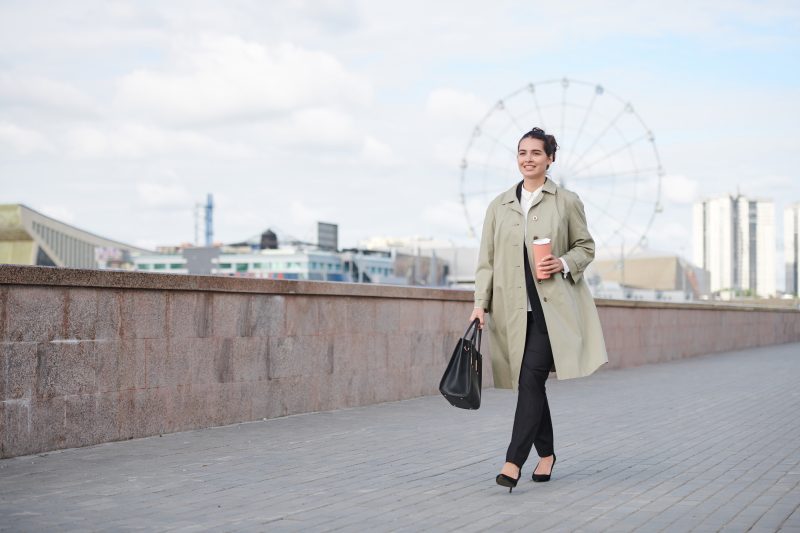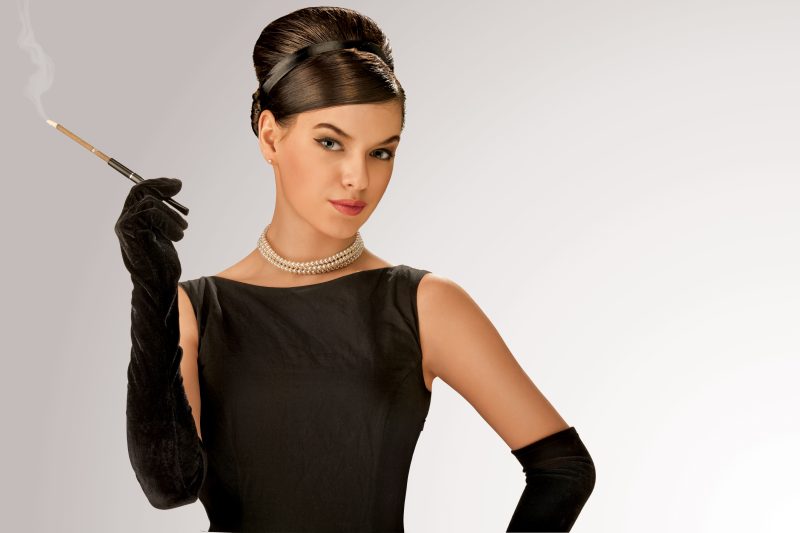There’s a day sometime in mid-October—usually a Tuesday, usually raining, obviously—when women across Britain collectively reach for The Coat. You know the one. It’s been hanging patiently at the back of your wardrobe since March, possibly still bearing the faint scent of last winter’s perfume or that mulled wine you spilled at the Christmas market. The moment of reuniting with The Coat marks the true start of British winter, regardless of what the calendar might say. And along with The Coat comes its faithful companion—The Boots. Together, they form the backbone of what I’ve come to think of as our national uniform, the armor that gets us through the grim stretch from October to April.
Last week, I found myself doing exactly this ritual. After three days of pretending I could still get away with a “transitional” jacket (narrator: she could not), I finally admitted defeat when my weather app showed nothing but rain clouds and single-digit temperatures for the foreseeable future. Reaching into the depths of my wardrobe, past the optimistic summer dresses and lightweight blazers, I pulled out my faithful wool coat—an investment camel number from & Other Stories that I bought four years ago and which, miraculously, still looks decent despite having endured four winters of daily tube commutes, weekend dog walks, and numerous mulled wine spills.
At the back of my shoe rack were its partners in crime—the sturdy black leather Chelsea boots that have molded to my feet over years of faithful service.
As I walked to the station that morning, coat buttoned against the wind, boots splashing through puddles, I realized I was suddenly part of an army. Looking around the platform, it was like we’d all received the same memo. At least seven other women were wearing some variation of my exact outfit—a wool coat (navy, black, camel, or grey) paired with leather ankle boots. Different styles, different brands, different budgets—but essentially the same armor against the British elements. And I bet if you looked in their bags, half of them would be carrying lighter shoes to change into at the office. This is the unspoken code of British dressing, the formula we all instinctively follow without ever really talking about it.
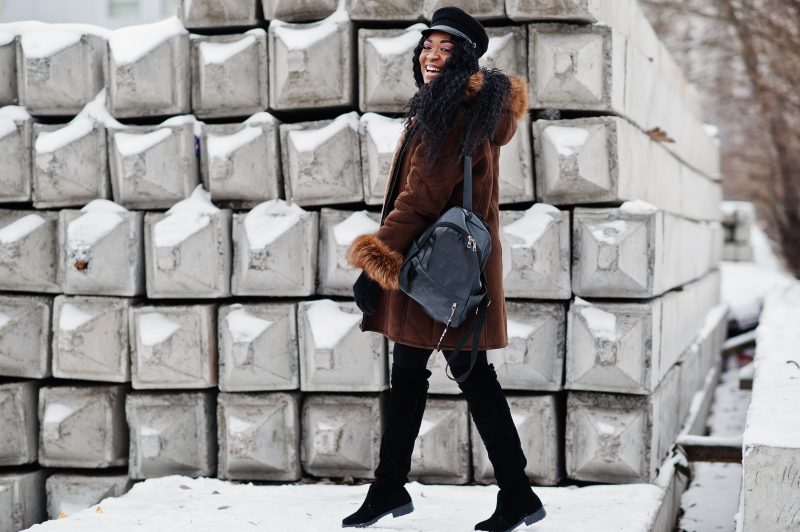
The core of this formula is deceptively simple: one really good coat + one pair of genuinely waterproof boots = surviving winter with your style intact. But within that simplicity lies endless interpretation, and that’s where it gets interesting. Because while the formula itself might be a practical necessity born of our miserable climate, the way we each execute it becomes a fascinating expression of personal style.
Take my neighbor Eliza, for instance, whose winter uniform consists of a perfectly tailored black wool coat that hits mid-calf, paired with chunky track-sole Chelsea boots that somehow look elegant rather than clompy on her. She wears this combination with everything from floral dresses to tailored trousers, adding nothing but gold hoop earrings and red lipstick, and consistently looks like she could step into a fashion shoot at a moment’s notice. Meanwhile, my colleague Sasha relies on a navy duffle coat and hiking-style leather boots that should look completely utilitarian but somehow give her a French film student vibe when paired with her signature Breton tops and perfectly broken-in jeans.
The British coat and boot formula has deep cultural roots. Ask any woman about her first “proper” coat, and you’ll likely unlock a core memory. Mine was a navy blue wool peacoat my mum bought me when I started secondary school, chosen specifically to last “at least three years” (it lasted five) and with enough room to wear “a proper jumper underneath” (her words, delivered with the gravity of someone imparting crucial survival skills, which in British winter, it essentially was). That coat represented a rite of passage—no more colorful puffer jackets or coats with cartoon characters. This was Serious Adult Outerwear, and it came with responsibilities: don’t lose it, don’t get pen on it, and for God’s sake, hang it up properly on a wooden hanger so the shoulders don’t get misshapen.
The boots were a similar milestone—moving from the flimsy fashion shoes of teenage years to footwear that wouldn’t disintegrate upon contact with actual rain. My first proper boots were from Clarks, bought in my first year of university after a particularly traumatic experience involving paper-thin ballet flats and an unexpected October downpour. My flatmate Imani had taken one look at my sodden feet and marched me to the nearest Clarks, where she instructed me to invest in “shoes that could handle Britain.” The saleswoman had nodded sagely, like they were both inducting me into some secret society of practical footwear.
What’s fascinating about our national coat and boot formula is how it transcends age, income, and personal style. Walk down any British high street in winter and you’ll see variations on the theme spanning generations. My 68-year-old mother, my 22-year-old cousin, and I can all wear some version of a good wool coat and leather boots without any of us looking inappropriately dressed for our age. It’s democratic in the best possible way.
Of course, the formula has evolved over the years. When I first moved to London in the early 2000s, the predominant coat style was a very fitted, nipped-at-the-waist affair that now looks quite dated. The boots were often pointy-toed and spindly-heeled—technically boots, but not ones you’d want to wear in an actual puddle. Around 2010, everything got more oversized and practical—suddenly cocoon coats were everywhere, and riding boots had their moment. Now we’re in an era where the slightly oversized, masculine-cut wool coat reigns supreme, paired with boots substantial enough to handle real weather but sleek enough to look intentional rather than purely practical.
The quality of the coat and boots is where British women tend to diverge based on budget—but interestingly, not always in the way you’d expect. I have friends with limited clothing budgets who save up for one extremely good coat, knowing it’ll be the most visible and hardest-working item in their wardrobe for half the year. Meanwhile, I know women with significantly more disposable income who buy a new mid-priced coat each winter, enjoying the freshness of an updated style. The boots follow a similar pattern—some swear by investing in one perfect pair that can be resoled repeatedly, while others prefer to refresh with new styles every couple of years.
My own approach has evolved over time. In my twenties, I fell into the trap of buying a new coat each winter, usually from the high street, usually with some detail that dated quickly—an exaggerated collar one year, an unusual belt the next. Each one would look passably good for one season, then progressively shabbier for another season or two before being relegated to the “coat I wear to take the bins out” category. By my early thirties, I’d figured out that this was both a financial and environmental disaster, and switched to saving up for one really good coat every four or five years.
My current winter coat lineup is minimal but effective: the aforementioned camel wool coat for everyday, a more structured black coat with subtle military detailing for work events and smarter occasions, and a proper waterproof parka for dog walks and weekends in the countryside. The boot situation follows similar logic: the everyday Chelsea boots, a pair of knee-high leather boots for when it’s properly cold, and waterproof hiking boots for proper country excursions. Six items that get me through six months of the year, in every situation from client meetings to muddy walks.
But having the basic formula sorted doesn’t mean there isn’t room for creativity and updating. This is where the “elevated with contemporary styling tricks” part comes in—those small tweaks that keep a classic combination feeling fresh rather than formulaic. This winter, I’ve noticed British women making the coat and boot combination their own in some specific ways.
First, there’s the unexpected color choice. While camel, black, navy and grey remain the core coat colors of the British winter landscape, I’ve been spotting increasing numbers of women opting for rich, unexpected hues. A woman on my morning train wears a coat in the most gorgeous shade of forest green I’ve ever seen, paired with chocolate brown boots—a combination that shouldn’t work but absolutely does. My friend Leila just invested in a deep burgundy wool coat that transforms her standard office outfits into something much more interesting.
Then there’s the belt trick. Rather than using the belt that comes with the coat (which often doesn’t sit right and gets lost half way through winter anyway), women are adding their own statement belts—sometimes pulled from actual trousers or jeans—to cinch and define. I spotted someone using what was definitely a men’s leather belt with a simple silver buckle over a slightly oversized black wool coat, and it looked infinitely cooler than any coat-supplied belt could.
Boot-wise, the most interesting styling I’ve seen involves unexpected combinations of formality—specifically, taking quite utilitarian, chunky boots and pairing them with very feminine outfits. There’s a woman I regularly see at my local station who wears heavy-duty lace-up boots with floral midi dresses and her smart camel coat, creating this brilliant tension between pretty and practical. It shouldn’t work but looks absolutely deliberate and cool.
Personally, I’ve been playing with proportions this winter. Rather than the expected silhouette of a fitted coat with slim trousers or a straight skirt, I’ve been wearing my more structured, slightly cropped coat with really wide-leg trousers and chunky boots, creating a more interesting and current shape. The trick is to keep the colors tonal—all black, all navy, or shades of brown and camel—so the interesting proportions take center stage without looking too busy.
The scarf deployment is another area where the basic formula gets personalized. Knotting it just so, choosing an unexpected color to pop against a neutral coat, or going oversized and belting it as part of the coat rather than as a separate accessory—these small tweaks can make even the most basic coat look thoughtfully styled. I recently invested in a massive wool scarf in a rust color that completely transforms my camel coat and makes it look much more expensive and considered.
Perhaps the most significant update to the traditional boots and coat formula has been the shift in what we wear underneath. While the outer layers might remain relatively classic and practical, the British woman’s approach to what lies beneath has evolved. Gone are the days when a coat was just something you’d wear in transit, to be immediately removed upon reaching your destination. Now, many of us are embracing the coat as part of the entire outfit, choosing pieces underneath that are specifically designed to work with, rather than separate from, our outerwear.
I noticed this shift last winter, when I realized I’d started buying tops and dresses specifically thinking about how they’d look with the collar or a few inches visible beneath my coat. The high-necked blouse that perfectly frames the open collar of a wool coat, the dress whose hem hits at exactly the right length to be seen beneath a mid-length coat—these have become conscious purchasing decisions rather than happy accidents.
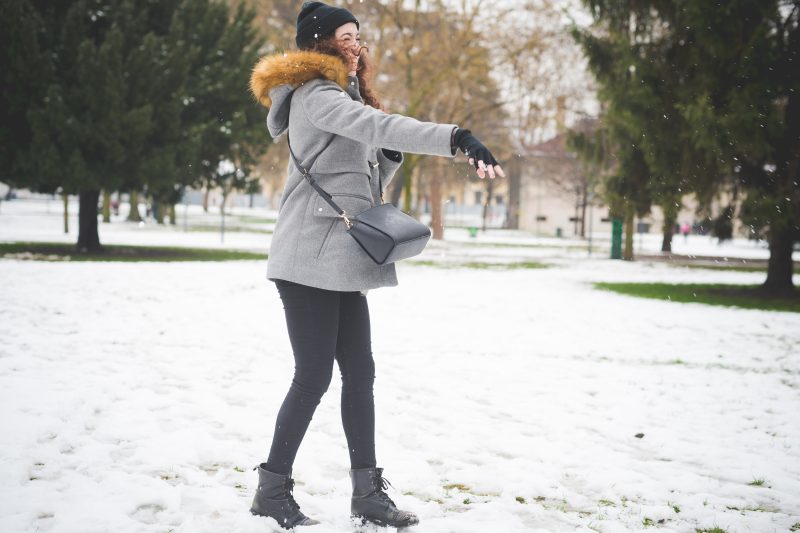
This evolution reflects a broader change in British dressing—an acknowledgment that, in our climate, how we look in our coats and boots is actually how we look most of the time. Rather than seeing them as purely practical items to be tolerated, we’re incorporating them into our overall style identity. When you’re going to be wearing the same coat for six months of the year, it makes sense that it should be something you genuinely love rather than merely tolerate.
As I write this, I can see the rain starting again outside my window, and I know that tomorrow morning I’ll once again go through the ritual of reaching for The Coat and The Boots.
I’ll button up against the weather and join the army of similarly attired women making their way through another British winter day. But far from feeling like this is a uniform imposed by climatic necessity, I’ve come to see it as a collective expression of practical style—our own version of national dress, evolved over generations and refined through countless rainy days.















